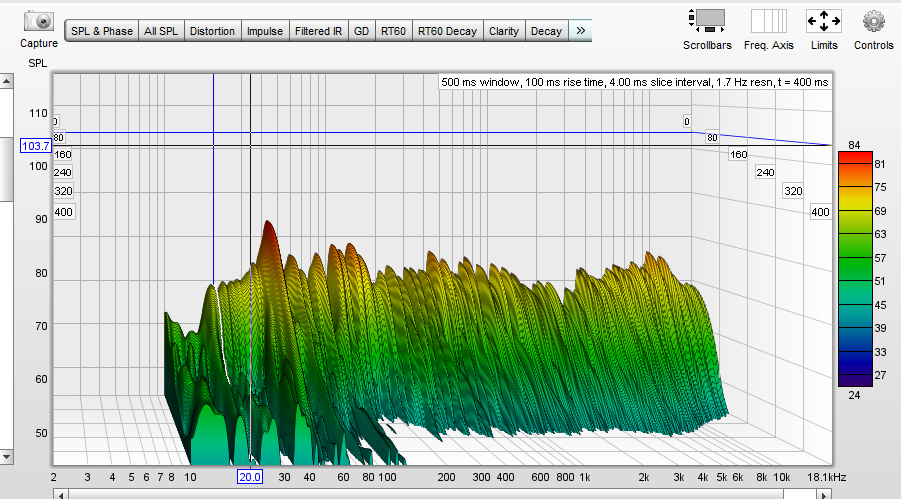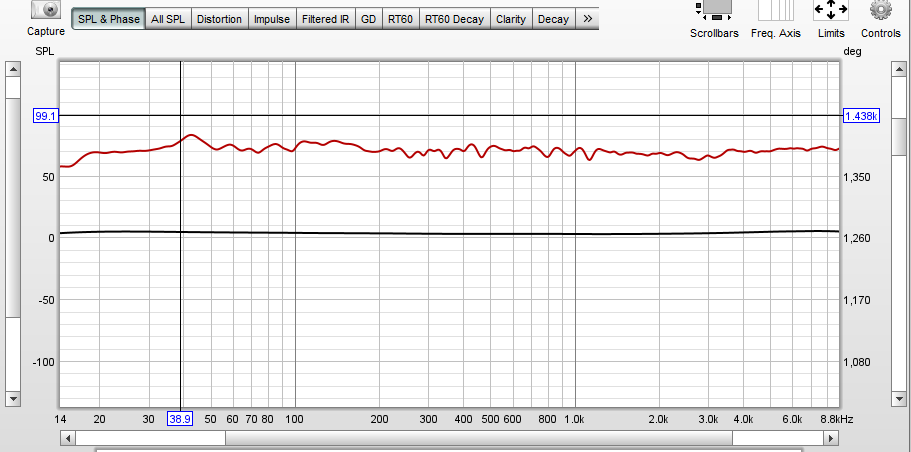@theaudioamp the room has an area rug covering the entire floor. I have a tv and stand between the speakers and I cover them with dense foam to keep reflections from them to a minimum. I am going to run a test with no treatments and then add one treatment at a time and see what I get. I agree, the 2k dropout is a problem. I hear sounds clearly in my car that I can barely hear on my home system and I believe the sounds I’m talking about are in this range.
Shouldn't This Sound Boomy?
I have recently purchased a mic and I’m running REW to test my room response. These are the resulting charts:


I hear nice tight bass when I play music. I hear a big improvement over my previous speakers. The mid range and treble sound great and again the bass sounds articulate and tight. I would think this would be boomy and muddled. Unfortunately, I did not have the ability to test my previous speakers. The room is treated with GIK panels, but I have no bass traps in the corners due to the spouse approval factor. Am I a horrible listener that can’t hear this, or am I missing something else?
- ...
- 43 posts total
@bobpyle , unfortunately Bob, your ears do not a reference point make. You can not tell someone how to make their system sound like you want to hear. What is it that you want to hear? Well perhaps you like your system a little brighter. What does that mean. You can not say. None of this, except the way I tune my system to my taste is an opinion of mine. It is an approach that all serious professionals use. And you always start from a reference point and that reference point is a flat amplitude response across the entire audio spectrum. The technology to manage audio systems was not available to us back in the day. I got my first record player in 1958 and it had a tonearm that looked like a cobra and even had eyes painted on it! Getting anything to sound right was a hit or miss proposition. People still behave as if this is still the case. It is not. With the right tools one can make almost any system (includes the room) sound good, maybe not great but in many instances surprisingly good. There are some rooms and situations that are totally hopeless but they are relatively few. The situations that are fantastic are also relatively rare, I am talking about rooms that were specifically designed for audio reproduction with speakers like your if you are a point source kind of guy or mine if you are into line source dipoles. You can never trust anyone's ears. People tend to like what they are use to listening to. To a person whose system is falsely bright a system that is correct will sound dull. If a person tells me he likes his treble advanced 3 dB/oct from 10kHz I know exactly what he means and can even imagine it. I can make almost any system sound the way I like without ever playing any music. If I analyzed your system I could tell you exactly what you are listening to, not my opinion of what you are listening to. |
@baclagg -- Good plan! From your description, you may have too many things absorbing sound and one in particular that is taking out the 2KHz! You can fix that with an equalizer. You can also replace your side absorber panels with a diffuser panel. You have all the tools you need at least. Once you fix the 2KHz drop, you may find the system a bit bright. Most people prefer the output to slope down as the frequency increases. |
But you did just that...
Go figure. |
@bobpyle, not all Bob. I referenced baclagg's frequency response curve. I know what my preferences are relative to a flat response curve because I have the capability of making my system perfectly flat or whatever I want it to be. My ears are not the reference but I know what ear likes to hear and the rest of me wants feel. I can replicate what I want to hear without ever listening to music just by measuring frequency sweeps an making adjustments according to what I hear but what I see. |
- 43 posts total

